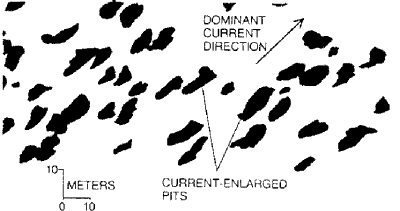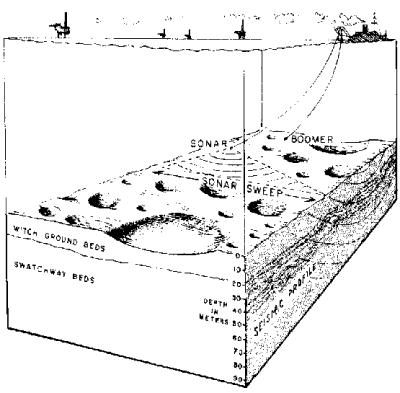 |
Science Frontiers ONLINE No. 50: Mar-Apr 1987 |
|
|
Whales And Seafloor Pits
 |
| Typical sizes, shapes, and disposition of whale-excavated pits in the Bering Sea. |
Rather surprisingly, the gray whale has become suspect as a pit excavator. They feed in the area of the pits; and the pits, before enlargement by currents, are just the size of the whales' mouths. The whales apparently dredge up sediment and, with their baleen, strain out amphipods (shrimp-like crustaceans) from the sand. The coexisting narrow furrows turn out to be the work of walruses digging for clams.
(Nelson, C. Hans, and Johnson, Kirk R.; "Whales and Walruses as Tillers of the Sea Floor," Scientific American, 256:112, February 1987.)
Comment. The whale tale seems a reasonable explanation of the pits described by Nelson and Johnson, but how far in time and space can it be stretched? Whales do frequent the North Sea, but we do not know whether they or methane eruptions excavate the many craters observed there. As for the much larger Carolina Bays, which exist by the thousands in sandy, coastal terrain, who can say without further study. The Carolina Bays, like the whale-made pits of the Bering Sea, are oriented. One can imagine that, when the oceans stood higher, whale pits were subsequently enlarged by swift currents. See our catalog Carolina Bays, Mima Mounds for more on seafloor craters and the Carolina Bays. For ordering information, visit: here.
 | Craterlets detected by sonar on the floor of the North Sea, as described in Unknown Earth. |